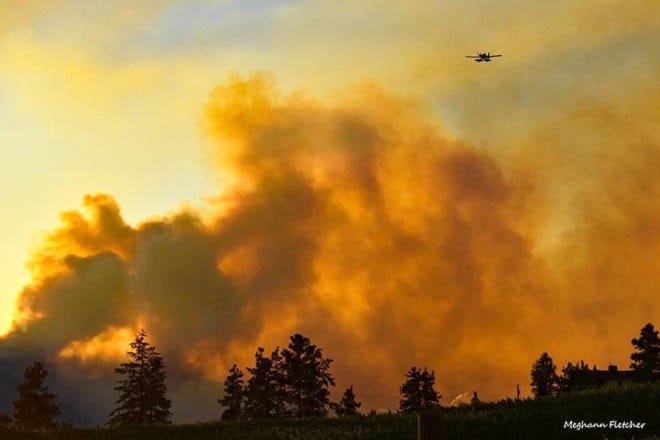Wildfires started by lightning strikes across the Okanagan has caused smoky skies throughout the valley, pushing air quality in the Central Okanagan to a high risk this morning
The C currently sits at a high risk, 10, which is the highest on the air quality health index. The index indicates that it will move to a low risk (three) later today.
Related:
The at-risk population, including children, are advised to reduce or reschedule strenuous activities outdoor. As well, the general population should also consider that advice 91ÂãÁÄÊÓƵ” especially if you are experiencing symptoms such as coughing and throat irritations.
As of this morning, the South Okanagan is ranked a five (moderate) on the index. This means the at-risk population should consider reducing or rescheduling strenuous activities outdoors if you are experiencing symptoms. For the general population, there is no need to modify your usual outdoor activities unless you experience symptoms such as coughing and throat irritation. According to B.C. Air Quality, the South Okanagan will move into a low risk later today.
Related:
The North Okanagan sits at a three (low risk) on the air quality health index.
Interior Health is reminding residents living in close vicinity to a fire to take precautions to protect their lung health. Smoke exposure can be concerning for infants, the elderly and those who have underlying medical conditions such as asthma, diabetes and lung (asthma/COPD) or heart disease, as well as pregnant women.
To reduce health risks associated with wildfire smoke, Interior Health recommends:
91ÂãÁÄÊÓƵ” Reduce outdoor activity on smoky days
91ÂãÁÄÊÓƵ” Find a clean air shelter such as large public buildings like libraries, community centres and shopping malls as they often have cleaner, cooler air than smaller buildings or the outdoors.
91ÂãÁÄÊÓƵ” Consider purchasing a commercially available HEPA (high efficiency particulate air) filter and creating a filtered air room in your house.
91ÂãÁÄÊÓƵ” Travel to areas with better air quality 91ÂãÁÄÊÓƵ“ conditions can greatly vary across geographic areas and elevations.
91ÂãÁÄÊÓƵ” People with asthma or other chronic illness should activate their asthma or personal care plan.
91ÂãÁÄÊÓƵ” Pay attention to local air quality reports and the conditions around you as smoke concentrations may vary and change over short periods and over small distances. A heavy bluish-white haze, possibly accompanied by the smell of smoke, is an indication smoke concentrations are higher than usual.
Check the in your area.



